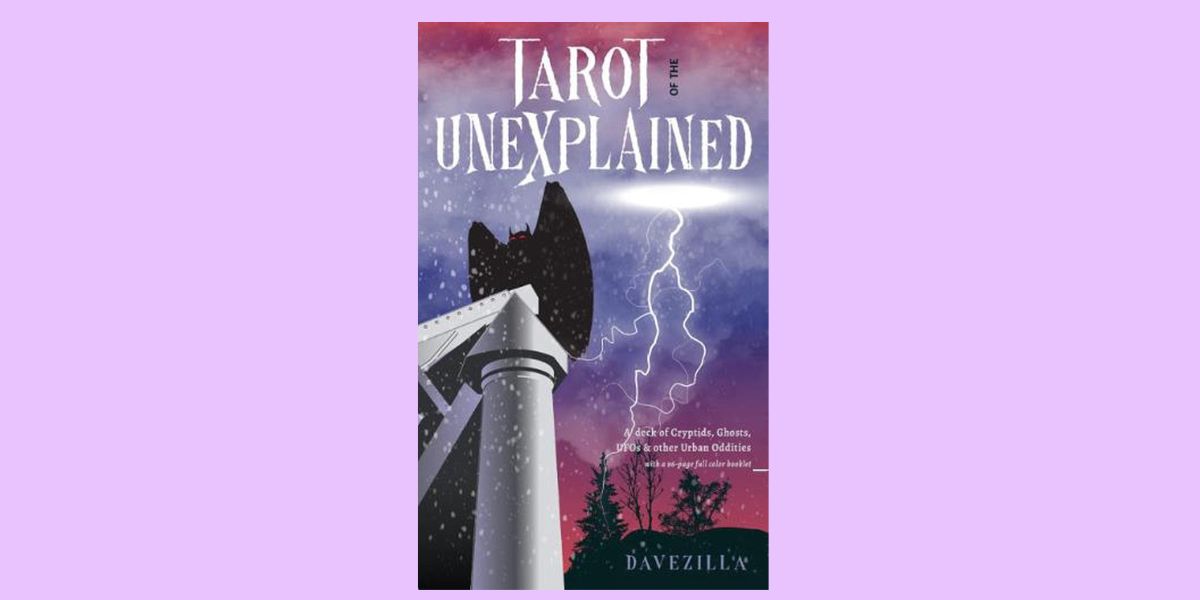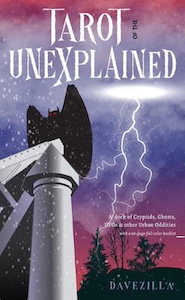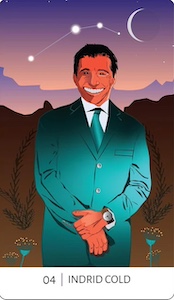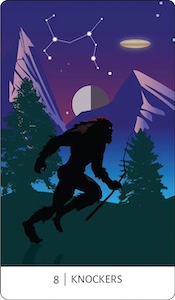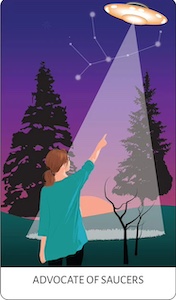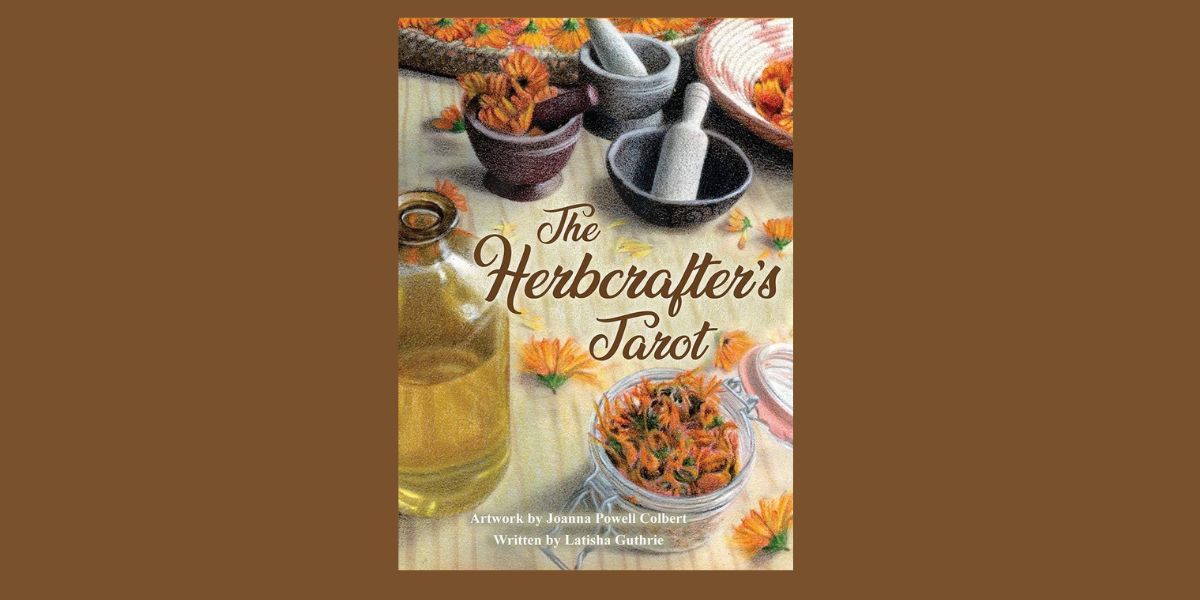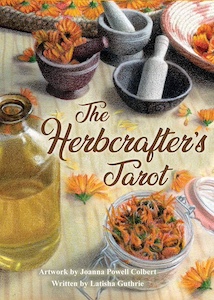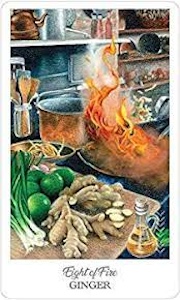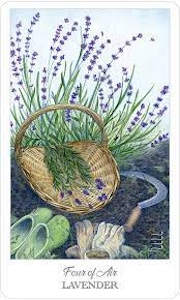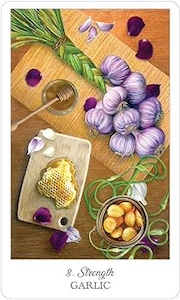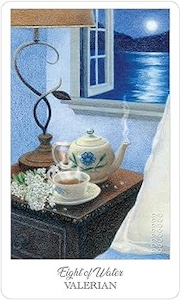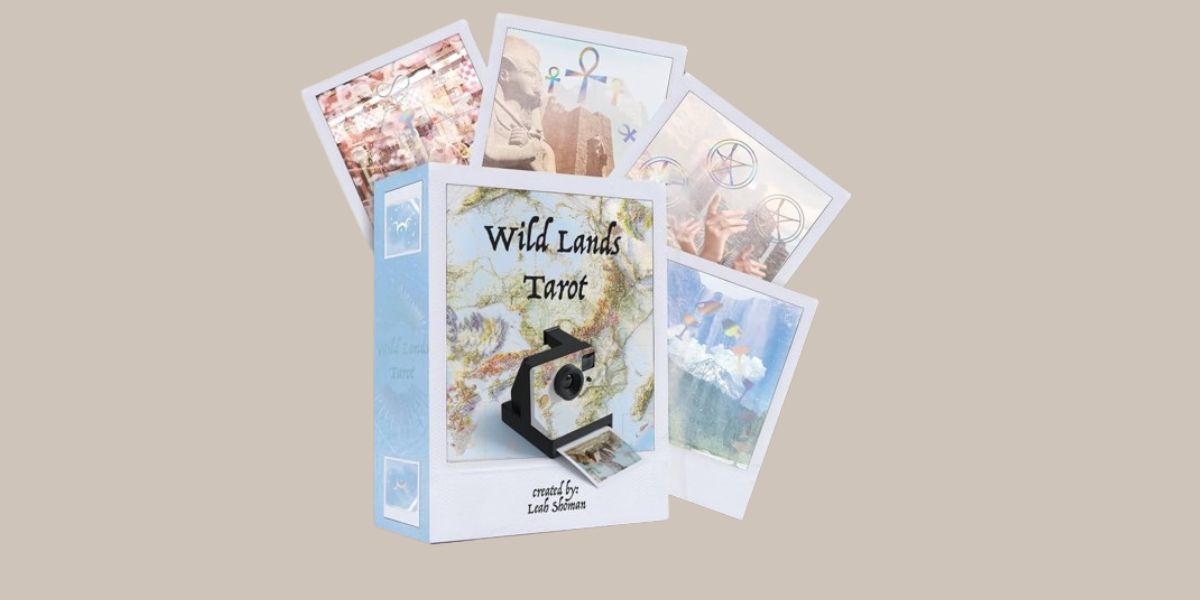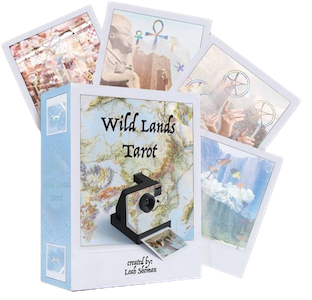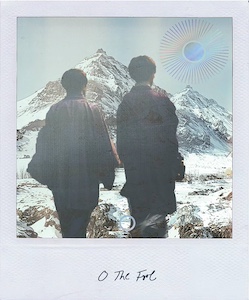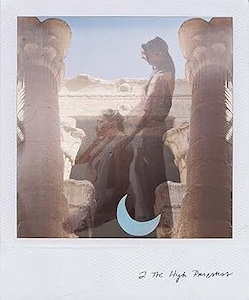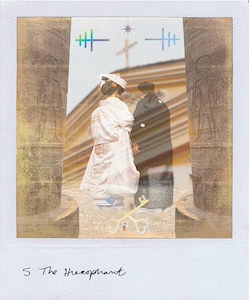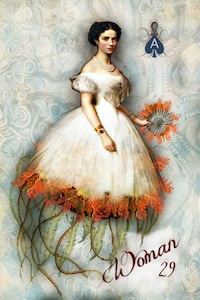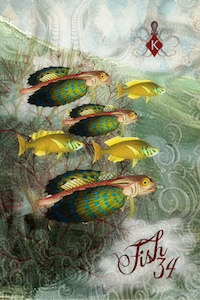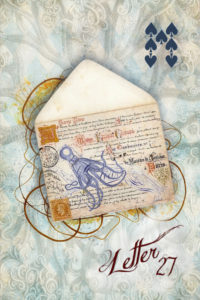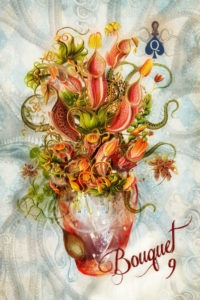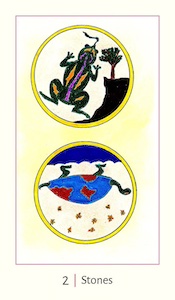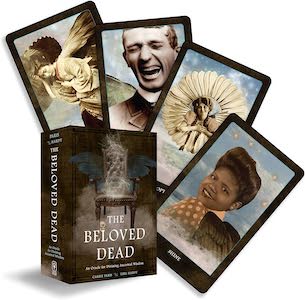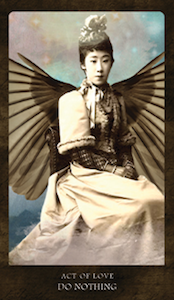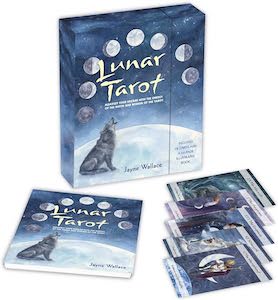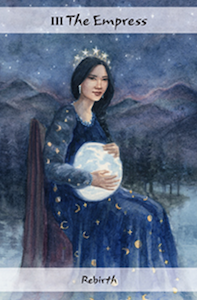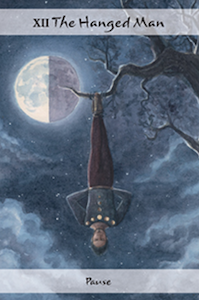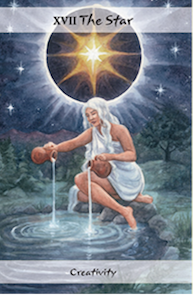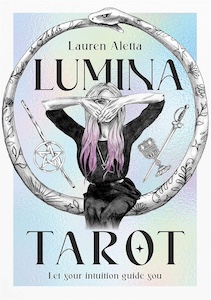
Lumina Tarot: Let your intuition guide you, by Lauren Aletta and illustrated by Tegan Swyny
Rockpool Publishing, 1922786284, 184 pages, 78 cards, September 2024
Lumina Tarot is a captivating and visually stunning deck that blends classical and modern stylistic elements. Created by psychic and spirit science teacher Lauren Aletta, this deck is infused with mystical wisdom brought to life by the illustrations of Tegan Swyny. Aletta’s approach to tarot is deeply personal and spiritual, encouraging users to explore within, overcome limiting beliefs, and allow the mystery to flow through them.
“This isn’t a tarot deck that tells you who you are; rather, it will inspire you to believe in yourself and be the hero of your own life.”1
Each card is thoughtfully illustrated with vibrant colors and intricate details, making it not only a tool for divination but also a piece of art that invites contemplation. Swyny has laced the imagery with spiritual symbolism, layering meaning within the cards. For instance, there’s a glyph of Mars on the Tower card, while the Knight of Cups features an ouroboros creating what appears to be a vivid full moon.

The deviation from the traditional tarot imagery allows the imagination to take flight. The blend of crystals, flowers, animals, and people on the cards make it feel vibrant and coursing with life. There’s a dynamism within the imagery; you can see the movement of energy taking place and it flows from the card into the readers.
And while there’s so much to intuit from the cards themselves, the guidebook further connects readers with their inner wisdom. I absolutely love the size of the guidebook (about 4.5 by 6.5 inches) because it’s easy to hold in one’s hand and read like a book. The text is nice and big, and the colorful imagery make it easy to find the card entry you’re looking for.
Aletta begins by providing general guidance for working with these cards and offering spreads that can be used. She then does a brief overview of the major and minor arcana and each element and suit with a quick note on reversals.
For each card, there’s a short summary of the meaning along with Aletta’s insightful interpretation for both the upright and reversed position. The descriptions are a blend of traditional tarot meanings with her unique spiritual perspective, written in a way that feels both accessible and profound.

The 2nd person writing style makes the reader the center of the guidebook description. I like how they read in this style because it’s similar to when one gets a reader from someone else; the reader can sit back and integrate the information without having to piece it all together using keywords or general descriptions other tarot guides often draw upon. Here’s a snippet from the Seven of Wands:
“You may be being called to back yourself and trust your own inner source of light. Your passion and resolve are being tested and, despite feeling uncertain, you welcome the occasion! You can feel the energy and vitality of what you stand for burning within you. You are being called to stand tall, to light the way for others.”2
One of my favorite cards in the deck is Wheel of Fortune. I am obsessed with how Swyny has illustrated it with a woman with eight arms standing on the sun and reaching up to touch the moon. In between her many arms is the moon in its different phases from waxing to waning. The grace and beauty of the card along with the sense of flow and movement instantly remind me of the ever-changing nature of life. There’s also the glyph of Jupiter etched into the moon, which reminds me of the expansiveness of life. Aletta’s guidebook entry for this card reads:

“Do not simply stand still and accept what life delivers. You are far more powerful than that. Be the course creator! Intentionally move the spinning wheel to the beat of your own heart’s guidance.”3
Overall, Lumina Tarot is a remarkable addition to the world of tarot cards. Its artistic beauty and depth of meaning make it a powerful tool for self-discovery and spiritual growth. Whether you’re new to tarot or a seasoned reader, this deck offers a rich and rewarding experience that can help you tap into your inner wisdom to live your life with greater clarity and insight. The vibrant energy of this deck coupled with a guidebook that speaks directly to me has quickly made this one of my favorite decks.
Alanna Kali is an astrologer, numerologist, and pioneer spirit that loves to explore life through the lens of depth psychology. She has a passion for studying the humanities and social trends. Her academic work is centered upon reuniting body, mind, and spirit through eco-psychology. She loves reading, spending time in nature, and travel.

